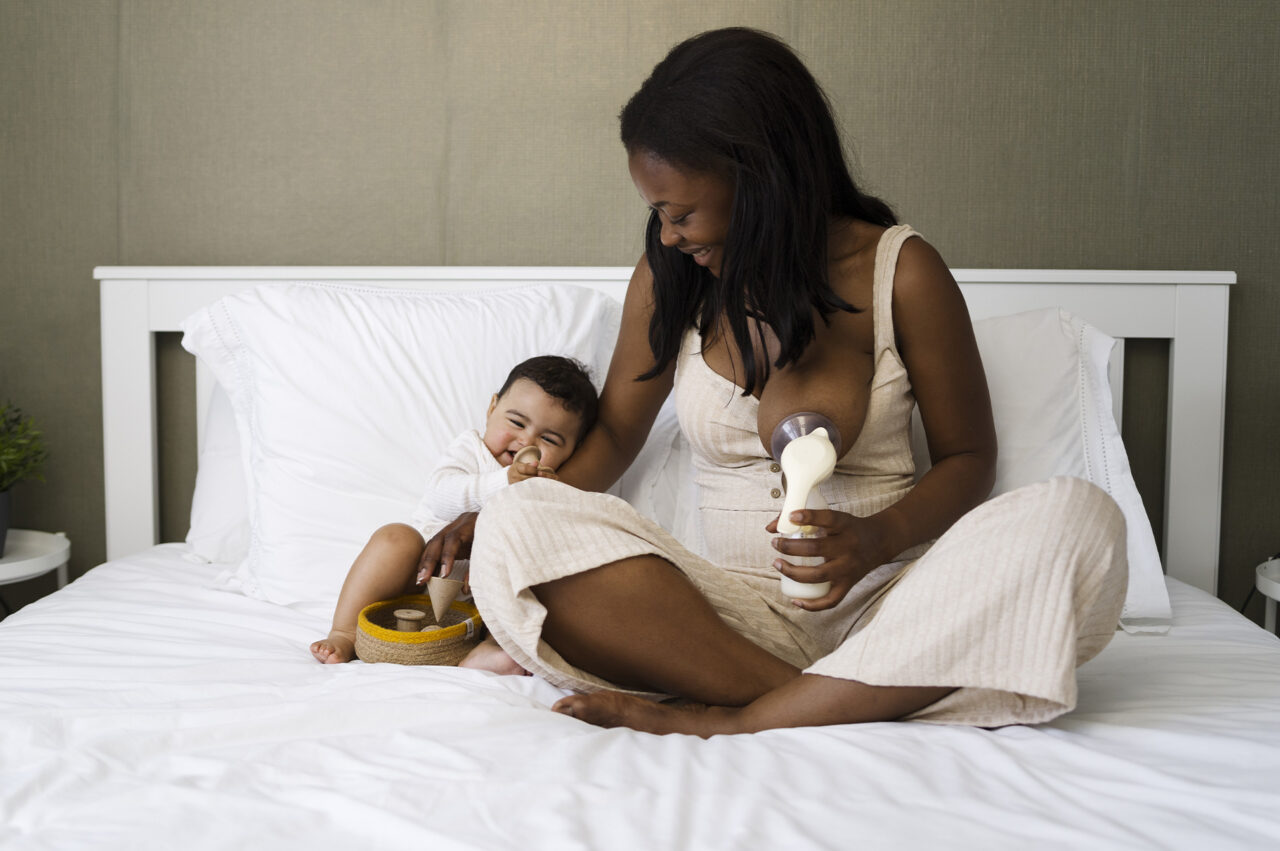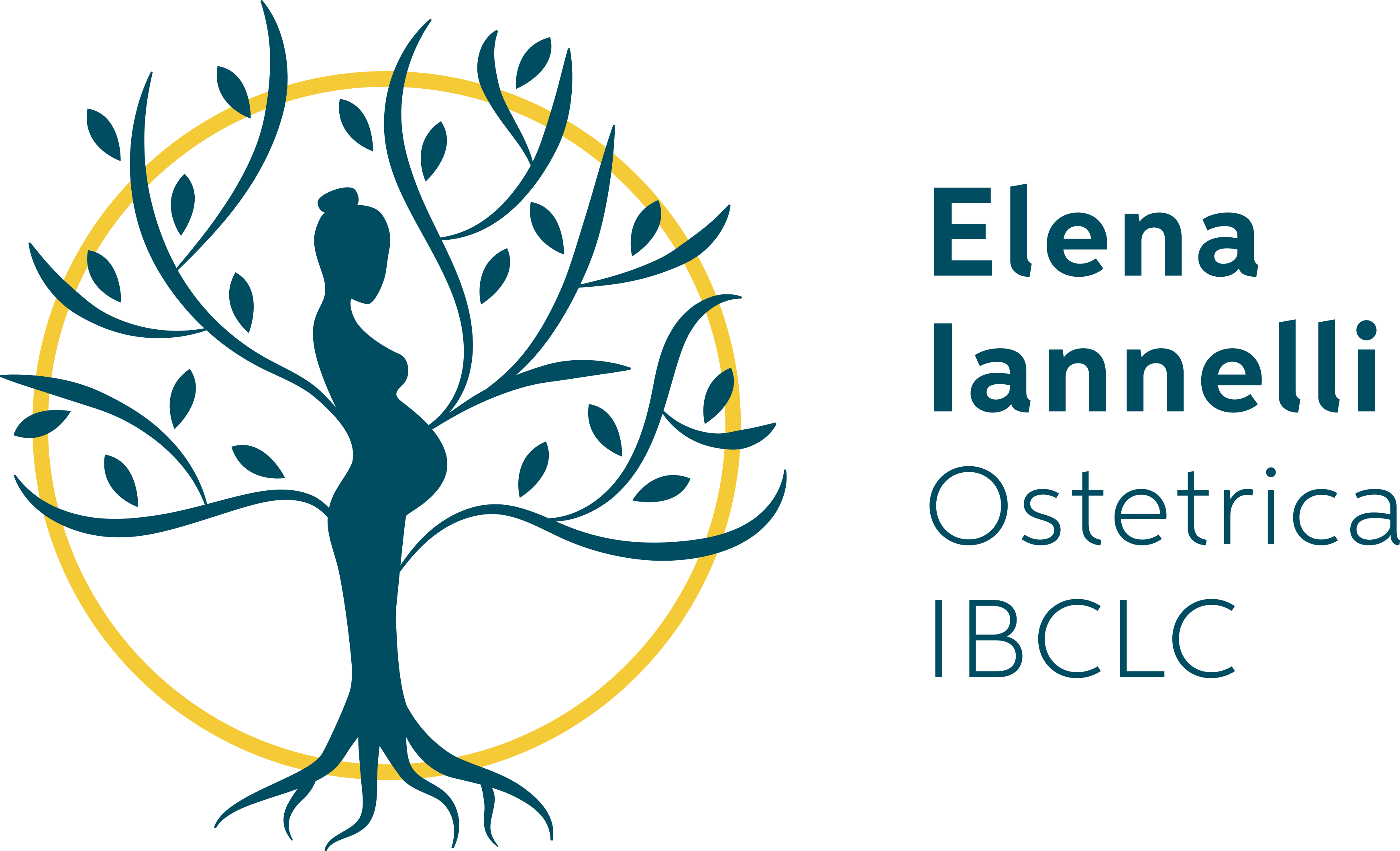Guide to breast pump use

Is using a breast pump really that simple?
Learning how to use a breast pump is not as simple as it may seem. As with any new device, you will need to take time to learn how to use it correctly, especially to use it without hurting yourself!
Whether you need to use a breast pump should be assessed on a case-by-case basis. If breastfeeding starts well and your baby grows healthily, you may never need to use one. It may be useful if you have to go back to work or be away for long periods.
One suggestion I would like to give you is to learn hand expressing first, which can be much more useful and practical in some circumstances and, if done with the right technique, may be more efficient than breast pumping. Many mothers find this technique easier and more productive but it always depends from person to person.
How is the breast pump used?
The breast pump is designed to simulate the same mechanism of sucking, vacuum and rhythm as babies. Vacuum and suction are not the only forces that babies apply to extract milk from the breast, there is also compression with the tongue and jaw. A few breast pumps try to mimic this through modifications of the flange (the funnel part). Some have automatically set cycles with a speed/suction rhythm that replicates as closely as possible that of babies. Let’s see what this involves and how to do it if it is not on automatic:
- Get in a comfortable position and make sure you have the right breast shield (flange) size for your breasts (see below);
- Initially set a quick cycle (sucking speed) and low vacuum (suction), i.e. light but fast suction;
- After a few minutes (when the milk starts to flow) increase the vacuum intensity and reduce the speed; after the first few times you use the breast pump, try increasing the vacuum intensity to the maximum comfort level, i.e. increase until it is bearable and not painful. Continue until you see that the milk starts to flow less or stops;
- At this point you can disconnect the flange, massage the breast for a few minutes and start again with the breast pump or finish with hand expressing.
Remember that there are two phases: the first, stimulation phase and the second, expressing phase. For this reason, before starting to use the breast pump, it is essential to spend a few minutes relaxing and massaging the breast to facilitate the release of oxytocin, the hormone that stimulates the ejection reflex.
Don’t worry if you initially only see a few drops coming out. If you are using the breast pump to increase your milk production (always seek advice from a lactation consultant first), the most important thing at the beginning is frequency, regularity and technique.
Every situation is unique, and based on the individual needs of each mother and baby, the most suitable way will be decided for your case. In some situations, it is more appropriate to do it more frequently for a short period, in other cases a few times a day for a longer period. The important thing, however, is to always find a strategy that suits your needs and your daily routine.
What are the characteristics of a breast pump?
There are two different circuit systems for breast pumps:
- Open circuit: designed for a single user, i.e. they cannot be shared (even after being thoroughly washed). They must be bought new.
- Closed circuit: can be used by several users (such as those in hospitals) because thanks to a barrier between the valve/tubing and the milk collection kit, there is no risk of leaking to the internal system of the breast pump. The collection kit, in case of re-use by a different person, must be bought new.
There are also different types of use:
- Manual: generally used for occasional use. Cheap, easily transportable, good for engorgements / mastitis. Speed and vacuum are controlled by hand so sometimes it can be tiring and difficult to maintain a rhythm. They should always be supported by the cup on the breast, never by the bottle.
- Electric: used to increase milk flow/production. Dual ones, i.e. with simultaneous stimulation in both breasts, are best for increasing prolactin levels and achieving good results in less time (more expensive models).
- They can be automatic or semi-automatic (you choose the sucking cycle). Most have several options to adjust the sucking intensity and speed. Some have pre-programmed sucking modes that include the initial stimulation phase.
5 things to keep in mind while using a breast pump
- The amount extracted by the breast pump is not always the same as the amount the baby takes directly from the breast;
- The milk ejection reflex is stimulated by the release of oxytocin. The time taken for the first ejection with the breast pump is generally longer than when the baby is directly attached to the breast. Certain emotional situations such as anxiety or stress inhibit oxytocin;
- Take some time to relax before you start using the breast pump, you can take a hot shower or apply warm compresses to your breasts and massage your breasts gently, you can put on relaxing music in the background or ask your partner to massage your back… the important thing is not to do it in a hurry or in a stressful moment;
- Always wash your hands well before and afterwards and always clean all parts of the breast pump that have been in contact with you and the baby’s mouth;
- The using of the breast pump must never be painful or make the nipples cracked or sore. You should carefully check that the size of the breast flange is neither too big nor too small (some brands include a choice of several sizes, in addition to the standard one). The part of the flange that sits on the nipple (the end of the funnel) must provide enough space to allow free movement back and forth without rubbing, while at the same time not pulling the areola part towards the duct. This is how the breast pump should fit on the breast:

source: https://www.emnodn.nhs.uk/expressing
If you are in pain, try a larger or smaller flange size according to your needs. If necessary, you can measure the diameter of your nipple (without the areola) and choose a flange size that is appropriately larger than your measurement (e.g. if your nipple is 20mm, cup size 21 might be too small and you could try flange size 24).
If you are unsure and continue to experience pain, always seek advice on how to use the breast pump from a lactation consultant.
How to clean the breast pump
- Always wash your hands well and dry them with paper or a clean cloth.
- Rinse the parts with milk residue under running water.
- Use a basin (that you do not use for other purposes) with warm soapy water and then rinse all parts thoroughly with warm water, taking care not to leave any milk residue.
- Avoid abrasive products or aggressive chemicals. If necessary, use a special sponge with very soft bristles.
- Let the parts air-dry well by placing them on clean paper or dabbing with clean paper (avoid using tea towels).
- Reassemble all parts only once they are completely dry.
- Store everything in a clean covered container.
To sterilise the device, you can boil the parts, use electric sterilisers or microwave sterilisation pouches. If you use the breast pump several times a day, you do not need to sterilise everything each time (unless your baby is preterm or has special conditions). You can clean the parts well as described above or use multiple parts during the day and then sterilise everything at least once in 24 hours.

